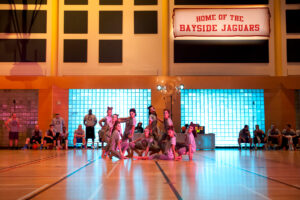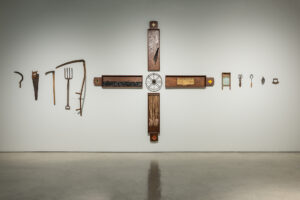“Every painting must have its own particular form to make a totality, resistant to and not assimilated by an ambiance and where each part depends on the whole and vice-versa.” – Rodolphe de Repentigny
Abstract art in Canada first established itself in the 1920s and 1930s in the creative and intellectual works of Marian Scott, Fritz Brandtner, Bertram Brooker and Lawren Harris. These artists were reacting to the tight stylistic and contextual reigns of the European pictoralist and landscape movements of the 18th century. Brandtner began to experiment with abstract art by the late 1920s and Lawren Harris’ abstract works were to come somewhat later, during an extended stay in the United States (1934-40). Harris exhibited his first abstract work in Canada in 1936 which drew their inspiration from spiritualism and particularly the writings of Russian artist Wassily Kandinsky, “Concerning the Spiritual in Art,” 1911. These painters strove to arrive at a personal spiritual expression and sought non-material subject matter for their works.
Another roadway into abstraction came by way of Surrealism, a literary and artistic movement founded by Andre Breton in the mid-1920s. Surrealists sought to get in touch with their subconscious and explored the world of dreams. They believed that the subconscious could be accessed through automatism, a kind of doodling where no conscious object was intentionally depicted. These ideas found themselves at home in the Montreal art scene of the 1940s which was to become the epicenter of Canada’s first truly independent avant garde movement, “Les Automatiste,” a term referring to a certain conception of art. This group of Québécois artistic dissidents included painters such as Paul Émile Borduas and Jean-Paul Riopelle who were responding to the precedents of European Cubism and Surrealism with their interests in spontaneous, automatic and subconscious creation. They felt strongly that artistic expression should be automatic; that the artist would not go through the normal process of deciding what to paint, making sketches, and then slowly creating a finished canvas in their studio. Instead, the artists should paint rapidly without any forethought, design, or even specific intentions as to what they were going to paint. They should paint automatically, letting their feelings and emotions flood out onto the canvas. The goal of automatic painting was not to create a beautiful picture, but to express the artist’s sub-conscious feelings and impulses. Members included Marcel Barbeau, Roger Fauteux, Claude Gauvreau, Pierre Gauvreau, Fernand Leduc, Jean-Paul Mousseau and Marcell Ferron
Approximately one decade later, Montreal artists found themselves once again reacting to the previous generation with the development of the Plasticien movement. This was a more orderly style of painting in reaction to Les Automatists strong interest in the theory of automatism. Their focus was on colours, lines, contrast; completely rejecting the idea of Surrealism and their attachment to the idealism of the European Constructivist movement. Artists such as Guido Molinari, Claude Tousignant and Fernand Leduc drew their influence from the European School of Geometric Abstraction — emphasizing that painting “is a search for true objectivity.”





